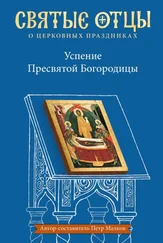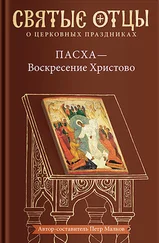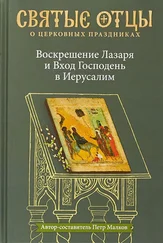Meditch, A. (1975) The development of sex-specific patterns in young children, Anthropological Linguistics, vol. 17 no. 9, 421–433.
Millman, V. (1983) Sex Stereotyping in Schools: the role and responsibilities of the teacher. Equal Opportunities Commission, Manchester.
Milroy, J. and Milroy L. (1978) Belfast: change and variation in an urban vernacular, pp. 19–36 in Trudgill, P. (ed.) Sociolinguistic Patterns in British English. Edward Arnold, London.
Milroy, J. and Milroy L. (1985) Linguistic change, social network and speaker innovation, Journal of Linguistics, 21, 339–384.
Milroy, L. (1980) Language and Social Networks. Basil Blackwell, Oxford. Milroy, L. (1982) Social network and linguistic focusing, pp. 141–152 in Romaine S. (ed.) Sociolinguistic Variation in Speech Communities. Edward Arnold, London.
Montaiglon, A. and Kaynaud, G. (eds) (1872–1890) Recuil general el complet des fabliaux des XIII еetXIV еsiecles (6 vols). Librairie des Bibliophiles, Paris.
Muscatine, C. (1981) Courtly literature and vulgar language, in Burgess, G. S. (ed.) Court and Poet. Selected Proceedings of the 3 rdCongress of the ICLS (Liverpool 1980), Liverpool. Nelson, K. (1973) Structure and strategy in learning to talk, Monographs of the Society for Research in Child Development, no. 149, vol. 38, no. 1–2.
Newbrook, M. (1982) Sociolinguistic reflexes of dialect interference in West Wirral. Unpublished Ph. D. thesis, Reading University.
O'Barr, W. and Atkins, B. (1980) ‘Women’s language’ or ‘powerless language’? pp. 93—110 in McConnell-Ginet et al. (eds) Women and Language in Literature and Society. Praeger, New York.
Ochs, E. and Schieffelin, B. (1983) Acquiring Conversational Competence. Routledge & Kegan Paul, London.
Orton, H. (1962) Introduction to the Survey of English Dialects. E. J. Arnold, Leeds.
Patterson, D. (1860) The Provincialisms of Belfast Pointed Out and Corrected. Belfast.
Payne, I. (1980) A working-class girl in a grammar school, pp. 12–19 in Spender, D. and Sarah, E. (eds) Learning to Lose. The Women’s Press, London.
Pee, W. (1946) Dialect-Atlas van West-Vlaandered en Fransch-Vlaanderen. De Sikkel, Antwerp.
Perkins, M. (1983) Modal Expressions in English. Frances Pinter, London.
Poole, J. (1646) The English Accidence. The Scolar Press Ltd, Menston, Yorks, 1967.
Pop, S. (1950) La Dialectologie: Apercu historique el melhodes d’enquetes ling-uistiques. Universite de Louvain.
Preisler, В. (рукопись) Linguistic Sex Roles in Conversation: Social Variation in the Expression of Tentativeness in English.
Reid, E. (1976) Social and stylistic variation in the speech of some Edinburgh schoolchildren. Unpublished M. Litt. thesis, University of Edinburgh.
Reid, E. (1978) Social and stylistic variation in the speech of children: some evidence from Edinburgh, pp. 158–171 in
Trudgill, P. (ed.) Sociolinguistic Patterns in British English. Arnold, London.
Romaine, S. (1978) Postvocalic/г/ in Scottish English: sound change in progress? pp. 144–157 in Trudgill, P. (ed.) Sociolinguistic Patterns in British English. Edward Arnold, London.
Romaine, S. (ed.) (1982) Sociolinguistic Variation in Speech Communities. Edward Arnold, London.
Romaine, S. (1984) The Language of Children and Adolescents: The Acquisition of communicative competence. Basil Blackwell, Oxford.
Rosaldo, M. Z. and Lamphere, L. (eds). (1974) Woman, Culture and Society. Stanford University Press.
Ryan, E. B. and Giles, H. (eds) (1982) Attitudes Towards Language Variation. Edward Arnold, London.
Sachs, J., Lieberman, P. and Erickson, D. (1973) Anatomical and cultural determinants of male and female speech, pp. 74–84 in Shuy, R. and Fasold, R. (eds). Language Attitudes: current trends and prospects. Georgetown University Press, Washington.
Sacks, EL, Schegloff, E. A. and Jefferson, G. (1974) A simplest systematics for the organization of turn-taking for conversation, Language, 50, 696–735.
Sapir, E. (1961) Male and female forms of speech in Yana, in Mandelbaum, D. (ed.) Selected Writings of Edward Sapir onLanguage, Culture and Personality. University of California
Press, Berkeley.
Sarah, E. (1980) Teachers and students in the classroom: an examination of classroom interaction, pp. 155–164 in Spender, D. and Sarah, E. (eds). Learning to Lose. The Women’s Press, London.
Sears, P. and Feldman, D. (1974) Teacher interactions with boys and with girls, in Stacey, J., Bereaud, S. and Daniels, J. (eds) And Jill Came Tumbling After: sexism in American education. Dell Publishing, New York.
Shipman, V. C. (1971) Disadvantaged children and their first school experiences, Educational Testing Service Head Start Longitudinal Study.
Siegler, D. and Siegler, R. (1976) Stereotypes of males’ and females’ speech, Psychological Reports, 39, 167–170.
Smith, P. M. (1979) Sex markers in speech, pp. 109–146 in Scherer, K. R. and Giles, H. (eds). Social Markers in Speech. Cambridge University Press.
Smith R. K. and Connolly K. (1972) Patterns of play and social interaction in preschool children, in Jones N. B. (ed.) Ethological Studies of Child Behaviour. Cambridge University Press.
Smith, W. G. and Heseltine, J. E. (eds). (1935) The Oxford Dictionary of English Proverbs. Oxford University Press.
Soskin, W. and John, V. (1963) The study of spontaneous talk, in Barker, R. (ed.) The Stream of Behaviour. Appleton-Century-Crofts, New York.
Spender, D. (1980a) Man Made Language. Routlcdgc & Regan Paul, London.
Spender, D. (1980b) Talking in class, pp. 148–154 in Spender, D. and Sarah E. (eds) Learning to Lose. The Women’s Press, London.
Spender, D. (1982) Invisible Women– The Schooling Scandal. Writers and Readers Publishing Cooperative, London.
Spender, D. and Sarah, E. (eds). (1980) Learning to Lose. The Women’s Press, London. Stanford Research Institute (1972) Follow-through pupil tests, parent interviews, and teacher questionnaires, Appendix C.
Stanworth, M. (1981) Gender and Schooling. WRRC Publications Collective.
Stone, M. (1983) Learning to say it in cup of tea language, The Guardian (Women’s Page), 19 April 1983.
Strodtbeck, F. and Mann, R. (1956) Sex role differentiation injury deliberations, Sociometry, 19, 3—11.
Swacker, M. (1975) The sex of the speaker as a sociolinguistic variable, pp. 76–83 in Thorne, B. and Henley, N. (eds) Language and Sex. Newbury House, Rowley, Massachusetts.
Swift, J. (1735) Works: Faulkner, Dublin.
Tajfel, H. (1974) Social identity and intergroup behaviour, Social Science Information, 13(2), 65–93.
Tajfel, H. (ed.) (1978) Differentiation Between Social Groups: studies in the social psychology of intergroup relations. Academic Press, London.
Tajfel, H. (1981) Human Groups and Social Categories. Cambridge University Press.
Thorne, В. and Henley, N. (eds). Language and Sex: difference and dominance. Newbury House, Rowley, Massachusetts.
Trudgill, P. (1972) Sex, covert prestige and linguistic change in the urban British English of Norwich, Language in Society, 1, 179–195.
Trudgill, P. (1974a) The Social Differentiation of English in Norwich. Cambridge University Press.
Trudgill, P. (1974b) Sociolinguistics. Penguin Books, Harmondsworth.
Trudgill, P. (ed.) (1978) Sociolinguistic Patterns in British English.
Читать дальше
Конец ознакомительного отрывка
Купить книгу












